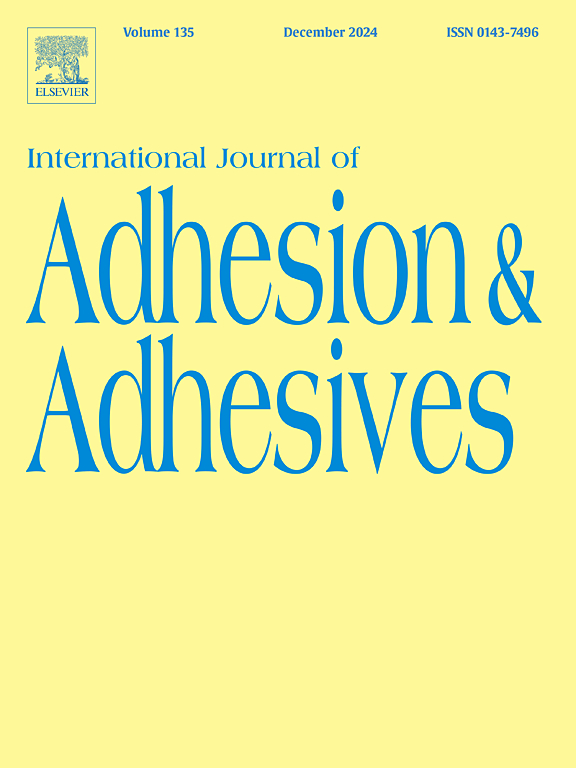High intensity focused ultrasound enhances bonding of universal adhesive to dentin in self-etch mode
IF 3.2
3区 材料科学
Q2 ENGINEERING, CHEMICAL
International Journal of Adhesion and Adhesives
Pub Date : 2024-12-05
DOI:10.1016/j.ijadhadh.2024.103901
引用次数: 0
Abstract
Objective
To investigate the effect of high intensity focused ultrasound (HIFU) exposure on enhancing the bonding of universal adhesives, in self-etch mode, to dentin. To achieve this aim, the effects of HIFU exposure on dentin micro-topography, structure, and nanoscale mechanical and chemical properties were investigated. In addition, resin-dentin interfacial morphology and micro-tensile bond strength (μTBS) were evaluated.
Methods
The effect of HIFU exposure at 5, 15, or 30W at varying time intervals (30–120 s) on the dentin surface properties were characterised by scanning electron microscopy (SEM), atomic force microscopy (AFM), Raman spectroscopy, and nano-indentation testing. The interfacial junctions between Scotchbond universal adhesive, in self-etch mode, and HIFU-treated dentin were characterised using confocal laser scanning microscopy (CLSM) and transmission electron microscopy (TEM). Furthermore, μTBS tests were conducted before and after thermocycling.
Results
HIFU exposure at 30W for 120 s resulted in almost complete removal of the smear layer. HIFU treatment at 15W for 60 and 90 s, and at 30W for 60 s significantly increased dentin surface roughness. Raman analysis indicated progressive mineral removal at higher HIFU power levels. HIFU treatment at 5, 15, and 30W did not significantly affect dentin reduced elastic-modulus and nano-hardness. Following HIFU application at 30W for 120 s, CLSM examination indicated marked increase in adhesive penetration. HIFU exposure for 120 s at 30 W was effective in removing the overlying smear layer facilitating partial demineralisation of the underlying superficial dentin substrate. Whilst HIFU treatment did not improve the immediate μTBS of Scotchbond universal adhesive in self-etch mode, 120 s HIFU treatment at 30W significantly improved the aged μTBS values compared to the control.
Significance
HIFU treatment of dentin surface at 30W for 120 s enhanced the structural integrity of resin-dentin interfacial junctions and the μTBS, after thermocycling, of a mild universal adhesive applied in self-etch mode.
求助全文
约1分钟内获得全文
求助全文
来源期刊

International Journal of Adhesion and Adhesives
工程技术-材料科学:综合
CiteScore
6.90
自引率
8.80%
发文量
200
审稿时长
8.3 months
期刊介绍:
The International Journal of Adhesion and Adhesives draws together the many aspects of the science and technology of adhesive materials, from fundamental research and development work to industrial applications. Subject areas covered include: interfacial interactions, surface chemistry, methods of testing, accumulation of test data on physical and mechanical properties, environmental effects, new adhesive materials, sealants, design of bonded joints, and manufacturing technology.
 求助内容:
求助内容: 应助结果提醒方式:
应助结果提醒方式:


